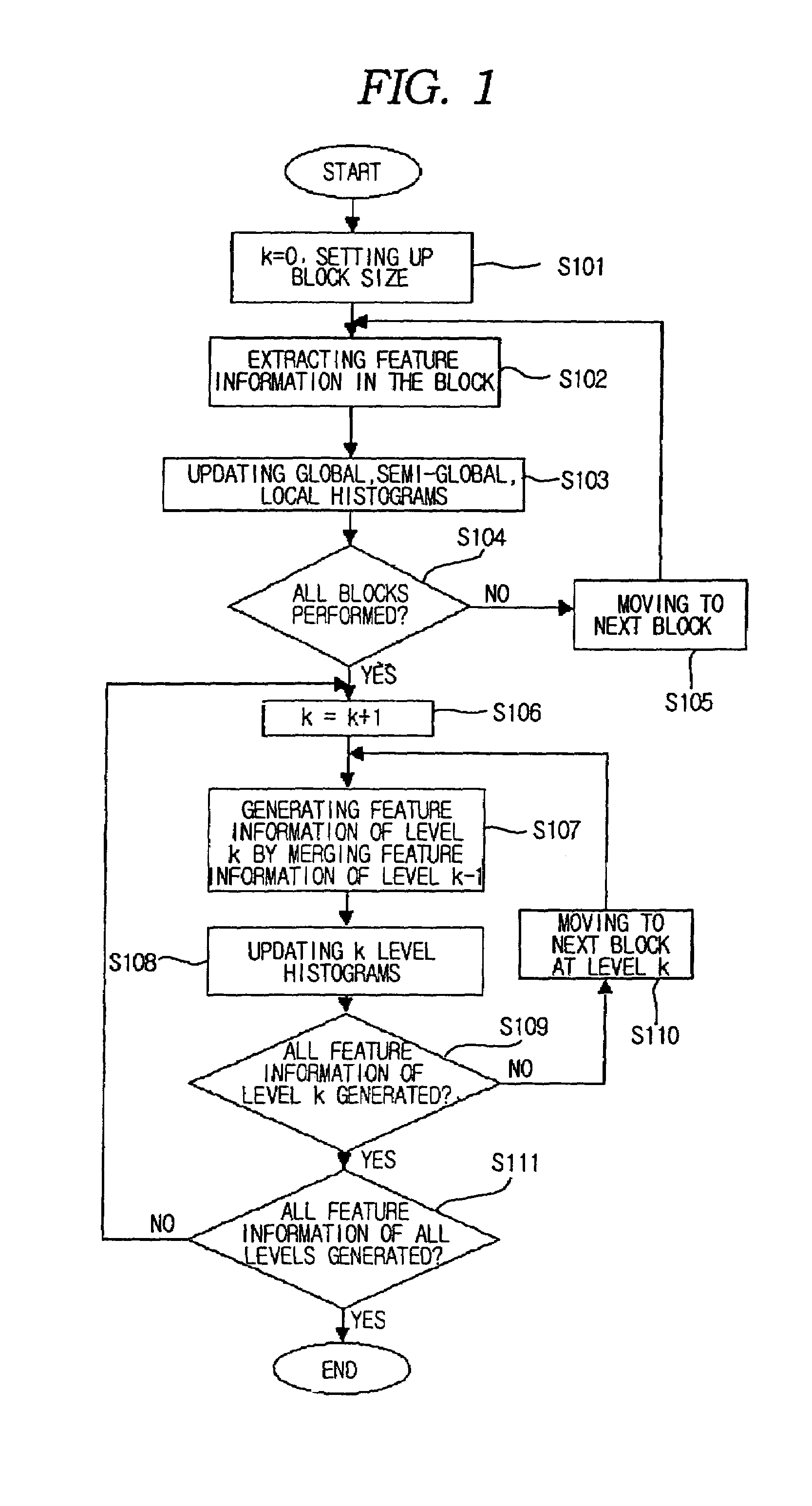Method for generating a block-based image histogram
a technology of image histogram and block-based image, which is applied in the field of method for generating block-based image histogram, can solve the problems of insufficient accuracy, inability to use brightness information, and inefficient methods in storage and similarity measuremen
- Summary
- Abstract
- Description
- Claims
- Application Information
AI Technical Summary
Benefits of technology
Problems solved by technology
Method used
Image
Examples
first embodiment
[0052]the method for detecting edges is as follows.
[0053]As shown in FIG. 3A, a block includes four sub-blocks. Brightness representative value of each sub-block is named as DC1, DC2, DC3, and DC4. A threshold value, Te, is defined for detecting edges between blocks. If the brightness difference between blocks is larger than Te, an edge exists and the edge is described by a thick sold line. As shown in FIG. 3B, FIG. 3C, and FIG. 3D, the edge may be categorized into one of three kinds. FIG. 3B shows a vertical edge. FIG. 3C shows a horizontal edge. FIG. 3D shows a miscellaneous edge. If an edge is detected, the related histogram bin is increased by one.
second embodiment
[0054]the method for detecting edges is as follows.
[0055]FIGS. 4A–4E show block filters for edge detection. FIG. 4A shows coefficient values of edge 90. FIG. 4B shows coefficient values of edge 0. FIG. 4C shows coefficient values of edge 45. FIG. 4D shows coefficient values of edge 135. FIG. 4E shows coefficient values of complex_edge. FIG. 5 is a flow diagram illustrating edge detection process.
[0056]As shown in FIG. 5, an edge value of 0 degrees (edge0), an edge value of 45 degrees (edge45), an edge value of 90 degrees (edge90), an edge value of 135 degrees (edge135), and a complex edge value (complex_edge) are obtained at step S501. The edge values may be obtained by convoluting five filters shown in FIG. 4 and representative values of sub-blocks. This is described in equation 1.
[0057]edge90=∑i=03(mean_sub_block(i)×edge90_filter(i))edge0=∑i=03(mean_sub_block(i)×edge0_filter(i))edge45=∑i=03(mean_sub_block(i)×edge45_filter(i))edge135=∑i=03(mean_sub_block(i)×edge13...
PUM
 Login to View More
Login to View More Abstract
Description
Claims
Application Information
 Login to View More
Login to View More - R&D
- Intellectual Property
- Life Sciences
- Materials
- Tech Scout
- Unparalleled Data Quality
- Higher Quality Content
- 60% Fewer Hallucinations
Browse by: Latest US Patents, China's latest patents, Technical Efficacy Thesaurus, Application Domain, Technology Topic, Popular Technical Reports.
© 2025 PatSnap. All rights reserved.Legal|Privacy policy|Modern Slavery Act Transparency Statement|Sitemap|About US| Contact US: help@patsnap.com



